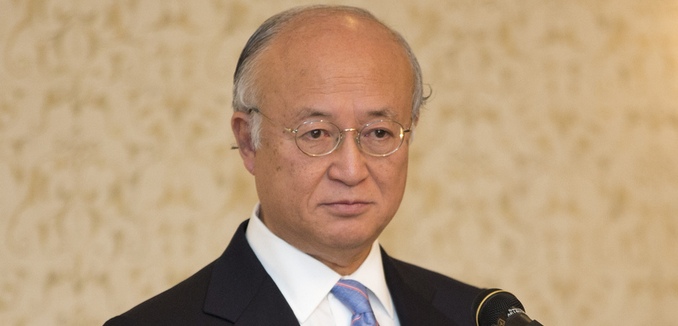In 2011 the International Atomic Energy Agency accused Iran of conducting work at its Parchin military facility that provided “strong indicators of possible nuclear weapon development.” The U.N. nuclear watchdog subsequently requested access to the site, and Iran refused. In 2012 reports emerged that Iranian officials were hurriedly destroying evidence of previous activity at Parchin. The IAEA again requested access to the site, and Iran again refused.
IAEA officials said they’d take some time “to reflect” on just why Iran was consistently blocking inspector access to Parchin. Yesterday the organization’s Director General Yukiya Amano delivered a statement to the organization’s Board of Governors. Analysts did not have to delve too deeply to find signs of deep frustration, and his comments on Parchin are worth reading in full. Fully half the passage is turned over to criticizing Iran for dragging out negotiations as it ramps up its atomic program:
On the structured approach, the Agency and Iran have had three rounds of talks since November 2012. However, it has not been possible to reach agreement. Access to the Parchin site has not been granted. I am therefore, once again, unable to report any progress on the clarification of outstanding issues, including those relating to possible military dimensions to Iran’s nuclear programme.
As far as the way forward is concerned, the Agency remains committed to engaging in constructive dialogue with Iran in order to resolve all outstanding issues, as called for in the Board resolution of 18 November 2011. It should be stressed, however, that agreement on the structured approach must be consistent with effective verification. Also, negotiations must proceed with a sense of urgency and a focus on achieving concrete results in the near term.
I would like to make clear that the structured approach document is not an end in itself. Nor is the negotiation process. We must not lose sight of the ultimate goal, which is to resolve all outstanding issues related to Iran’s nuclear programme. Dialogue should produce results. Timing is also important. In its resolution of 13 September 2012, the Board said that it was essential for Iran “to immediately conclude and implement” the structured approach.
I request Iran once again to provide access to the Parchin site without further delay, whether or not agreement has been reached on the structured approach. Providing access to the Parchin site would be a positive step which would help to demonstrate Iran’s willingness to engage with the Agency on the substance of our concerns.
Amano’s comments are in line with those made yesterday by Secretary of State John Kerry, who emphasized that Washington was growing frustrated with Tehran’s stalling efforts. Officials from the U.S., U.N., and E.U. – as well as from Israel – have become increasingly vocal in recent weeks regarding concerns that Iran is using talks to play for time as it prepares to sneak across the nuclear finish line.
Iran’s raw ability to sneak across that line is a function of how well and for how long the regime would be able to shield its activities from Western intelligence agencies, which is itself dependent on how fast Iranian scientists can enrich nuclear material. Iran’s announcement that it will install 3,000 advanced IR-2m centrifuges at its Natanz facility – technology designed to speed enrichment and described as potentially game-changing by non-proliferation experts – has heightened concerns that it could enrich sufficient weapons-grade material for a bomb before the West could intervene.
Amano confirmed installation of those advanced centrifuges, linking them to broader concerns over the Iranian program:
Concerning safeguards implementation in Iran, the Agency continues to verify the non-diversion of nuclear material declared by Iran under its Safeguards Agreement. However, Iran is not providing the necessary cooperation to enable us to provide credible assurance about the absence of undeclared nuclear material and activities. The Agency therefore cannot conclude that all nuclear material in Iran is in peaceful activities.
As detailed in my report, Iran has recently begun installing IR-2m centrifuges at the Fuel Enrichment Plant at Natanz. This is the first time that centrifuges more advanced than the IR-1 have been installed for production purposes. Construction of the IR-40 Reactor continues and Iran has stated that the reactor is expected to begin operating in the first quarter of 2014.
[Photo: NRCgov / Flickr]




